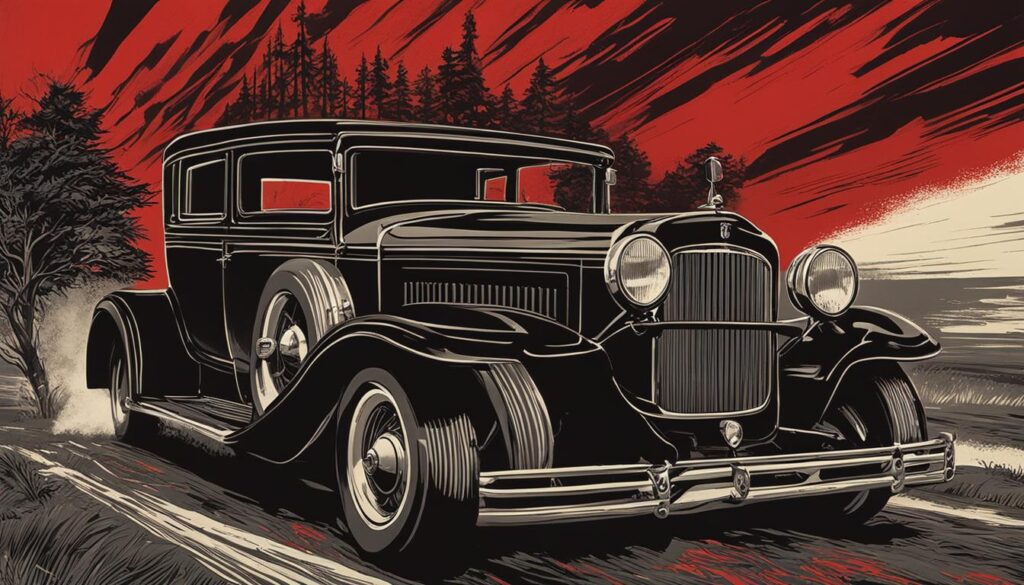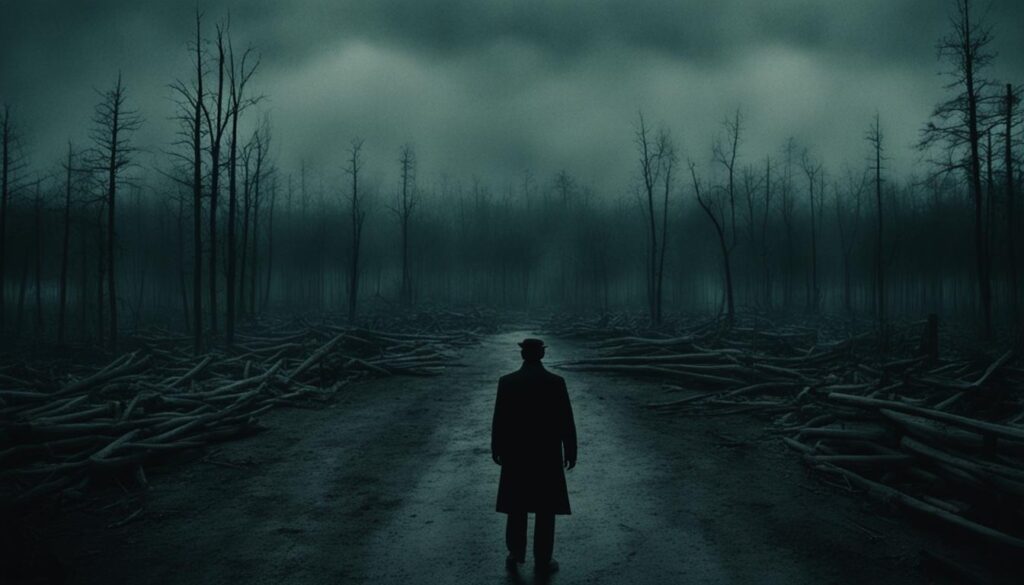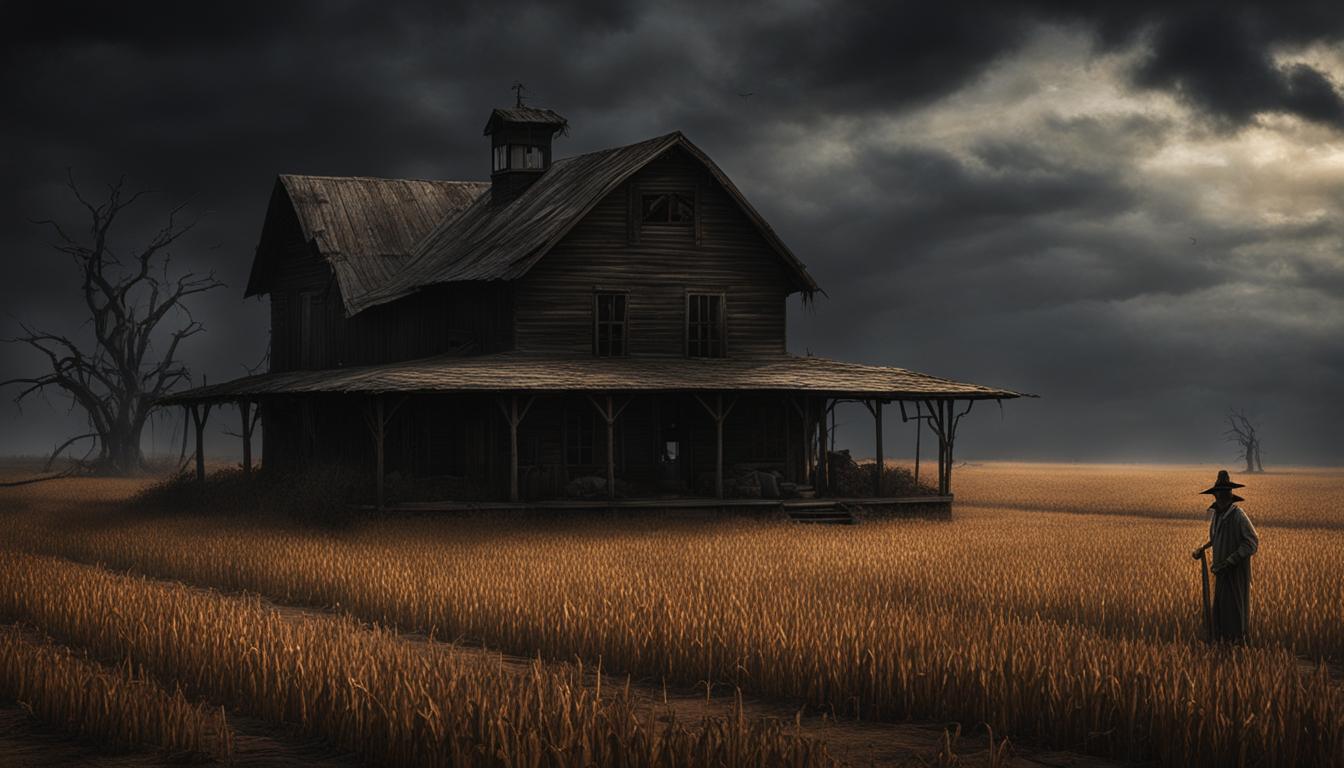Stephen King is a master of the horror genre, and his novella “1922” is an excellent example of his gripping storytelling ability. This book will keep readers on the edge of their seats from start to finish. “1922” has become a favorite among fans of Stephen King’s work, and for good reason.
In this article, we will explore the various elements that make “1922” such a compelling read. From the plot summary to the characters, themes, and writing style, we’ll provide an in-depth analysis of this classic Stephen King novella.
But first, let’s take a closer look at why “1922” is a must-read for horror fans and Stephen King enthusiasts alike.
Overview of “1922”
Stephen King’s 1922 novella tells the story of a man named Wilfred James who persuades his son to assist him in the murder of his wife, Arlette. The story takes place in Nebraska during the eponymous year, and centers around the aftermath of the crime.
The novella explores themes of guilt, regret, and the breakdown of a family, as Wilfred struggles to come to terms with his actions while being haunted by the ghost of his deceased wife. It is a dark and haunting tale that pulls readers into its eerie world from the very first page.
The plot twists and turns, leading readers on a gripping journey as Wilfred’s carefully constructed deception begins to crumble around him. Along the way, readers are introduced to a cast of complex and nuanced characters, each with their own motivations and agendas.
Setting and Atmosphere
In “1922,” Stephen King transports readers to an atmospheric setting that is both haunting and immersive. The novella takes place in Nebraska during the 1920s, a time marked by rural life and the rise of technology. Through vivid descriptions, King evokes a sense of isolation and claustrophobia that intensifies as the story progresses.
One of the most notable aspects of the novella’s atmosphere is its eerie quality. As the protagonist’s misdeeds begin to catch up with him, the setting takes on a malevolent air that heightens the tension and suspense. King’s masterful use of foreshadowing and symbolism adds to the overall sense of foreboding and unease.
From the vast, open fields of Nebraska to the dark, claustrophobic tunnels under the protagonist’s house, the setting plays a crucial role in “1922.” By creating such a vivid and unsettling backdrop for the story, King ensures that the novella will linger in readers’ minds long after the final page has been turned.
Character Analysis
Stephen King’s “1922” features a compelling cast of characters, each with a unique role and motivation that drives the novella’s narrative forward.
The protagonist, Wilfred James, is a proud and stubborn farmer who becomes embroiled in a heinous crime that sets off a series of devastating consequences. As the story progresses, readers are given a glimpse into Wilfred’s psyche and witness his gradual descent into madness.
The antagonist in “1922” takes on a more ambiguous form as the story unfolds. The malevolent force that Wilfred and his family must face is not a physical entity, but rather a manifestation of the guilt and paranoia that plagues them in the aftermath of the crime. This shadowy presence contributes to the overall eerie atmosphere of the novella.
Other notable characters in “1922” include Wilfred’s wife, Arlette, whose murder sets the story in motion, and their son, Henry, who becomes caught up in his father’s schemes. The novella also features a host of supporting characters who add depth and complexity to the story.
Through his vivid portrayal of characters, King creates a gripping and emotionally charged narrative that leaves a lasting impact on readers.
Themes and Symbolism
Stephen King’s “1922” is a novella filled with themes and symbolism that enhance the narrative and deepen the meaning of the story. One of the prominent themes in the novella is the consequences of guilt and regret. The protagonist, Wilfred James, is consumed by guilt after murdering his wife and struggles with the consequences of his actions. This guilt is further emphasized through the supernatural occurrences that follow him, which ultimately lead to his downfall.
Another theme present in “1922” is the corruption of power and greed. Wilfred’s desire to hold onto his land and inheritance leads him to commit the heinous act, but his actions only serve to unravel his life. King also incorporates a sense of entropy and decay throughout the story that marks the passing of time and the inevitable decline of the human condition.
Symbolism is also heavily utilized throughout the novella, lending deeper meaning to various elements. For example, the rats that infest Wilfred’s barn serve as a symbol not only of decay but also of his guilt, as they represent the things he wishes to hide away. The image of a corpse rising from a well is also used as a powerful and haunting symbol for impending doom.
The themes and symbolism in “1922” serve as a testament to King’s ability to craft a story that is not only gripping but also deeply thought-provoking. The use of these elements elevates the novella to a work of art that merits multiple readings and interpretation.
Writing Style and Narrative Technique
Stephen King is renowned for his unique and captivating writing style, and “1922” is no exception. In this novella, he employs a narrative technique that draws readers in and keeps them engaged until the very end. King’s writing style is characterized by vivid descriptions, believable dialogue, and a suspenseful plot that keeps readers on the edge of their seats.
One of the standout features of King’s writing in “1922” is his use of first-person narration. Through the voice of the protagonist, Wilfred James, King is able to convey the character’s thoughts and emotions in a way that feels intimate and immediate. This helps readers to connect with the story and feel invested in what happens to Wilfred and his family.
Another aspect of King’s writing in “1922” is his attention to detail when describing the setting and atmosphere of the story. Through rich descriptions and imagery, he creates a haunting and eerie landscape that adds to the tension and dread of the plot. This attention to detail is also evident in the way he crafts each character, giving them unique personalities and motivations that feel authentic and well-realized.
King’s writing style and narrative technique in “1922” contribute to its lasting impact on readers and the horror genre as a whole. Through his mastery of storytelling, he is able to create a world that feels both familiar and unsettling, drawing readers in and keeping them hooked until the very end.
Critical Reception
Since its publication, “1922” by Stephen King has garnered critical acclaim and invigorating reviews. With its haunting and atmospheric setting, gripping plot, and unique writing style, it has captivated readers and critics alike.
According to The New York Times Book Review, “1922” is “a gruesome masterpiece that will leave readers shaken.” Meanwhile, Publishers Weekly describes it as “a chilling horror novella that explores the consequences of greed and guilt.”
The novella’s success extends beyond literary circles. In 2017, a film adaptation of “1922” premiered on Netflix, further cementing its place as an enduring part of the Stephen King canon.

Influence and Legacy
Stephen King’s “1922” novella has had a significant impact on his subsequent works as well as the horror genre as a whole. The dark and haunting story has inspired other writers and filmmakers to explore similar themes and create their own eerie atmospheres.
One notable adaptation of “1922” is the 2017 Netflix film of the same name, which stays true to the original story’s spirit while adding its own twists and interpretations. The film received critical acclaim and is a testament to the lasting legacy of King’s novella.
King’s writing style and narrative technique in “1922” have also had a lasting influence on the horror genre. His ability to create a gripping story with vivid characters and an eerie setting has inspired countless writers to explore similar themes and techniques.
Overall, “1922” is a testament to Stephen King’s legacy as a master storyteller and a foundational work in the horror genre.
Reader Reviews and Recommendations
Many readers have been captivated by Stephen King’s “1922” novella, praising it for its haunting atmosphere and gripping storyline. One reader, Sarah J., wrote, “I couldn’t put it down! The way King creates such an eerie atmosphere is incredible.” Another, John P., commented, “The character development in this novella is outstanding. I felt like I knew exactly who these people were and was invested in their journey.”
Overall, readers recommend “1922” to any fans of Stephen King or the horror genre. As reviewer Emily R. put it, “If you’re looking for a spine-chilling read, this novella is definitely worth picking up.”
| Reader Name | Review |
|---|---|
| Sarah J. | “I couldn’t put it down! The way King creates such an eerie atmosphere is incredible.” |
| John P. | “The character development in this novella is outstanding. I felt like I knew exactly who these people were and was invested in their journey.” |
| Emily R. | “If you’re looking for a spine-chilling read, this novella is definitely worth picking up.” |
Comparisons to Other Stephen King Works
Stephen King is a prolific author who has written numerous novels and novellas throughout his career. When comparing “1922” to his other works, there are some notable similarities and differences in themes, writing style, and narrative approach.
Similarities in Themes
“1922” shares similar themes with other Stephen King novellas, such as “The Mist” and “Rita Hayworth and Shawshank Redemption.” These works all explore the dark side of human nature, showcasing the lengths people will go to in order to survive in challenging situations. They also deal with themes of guilt, regret, and redemption.
Differences in Narrative Approach
Compared to some of King’s other works, “1922” has a slower, more atmospheric approach to storytelling. Unlike the breakneck pace of “The Shining” or “Carrie,” “1922” takes its time setting up the characters and situation before delving into the events that drive the plot forward.
Differences in Writing Style
King’s writing style is versatile, and he often changes his approach depending on the story he is telling. In “1922,” King’s prose is more literary than some of his more mainstream works like “It” or “The Stand.” The novella’s structure also differs from some of his other works, as it is composed of journal entries rather than a traditional narration.

Impact on the Horror Genre
Stephen King’s contributions to the horror genre cannot be overstated. His works have long been revered for their ability to terrify readers while also offering insightful commentary on society and the human condition. “1922” is no exception, as it pushes the boundaries of the genre in new and exciting ways.
The impact of “1922” on the horror genre is significant. Through its eerie atmosphere, dark themes, and chilling plot, the novella has influenced countless horror writers and filmmakers. Its legacy can be seen in films such as “The Witch” and television shows such as “Penny Dreadful.”
The influence of “1922” can also be seen in the increased emphasis on psychological horror in the genre. Rather than relying on cheap jump scares and gore, many modern horror works incorporate nuanced character development and slow-building tension, much like “1922.”
Stephen King Novellas and Their Impact on the Horror Genre
| Novella Title | Year Published | Impact on Horror Genre |
|---|---|---|
| “Carrie” | 1974 | Revolutionized the genre with its unflinching examination of female adolescence and the horrors of bullying. |
| “The Mist” | 1980 | Expanded the possibilities of horror storytelling by emphasizing the psychological toll of being trapped in a small space with unknown terrors. |
| “1922” | 2010 | Pushed the boundaries of the genre through its expertly crafted atmosphere, complex characters, and nuanced exploration of the horrors of guilt and regret. |
Overall, “1922” continues to have a lasting impact on the horror genre. Its unique blend of atmospheric horror and psychological suspense set a new standard for the genre, and its influence can still be seen in contemporary works today.
Conclusion
“1922” is a gripping novella that showcases Stephen King’s unparalleled storytelling abilities. The plot is haunting and atmospheric, drawing readers into the dark world created by King. The characters are well-developed and their motivations are thoroughly explored, adding depth to the narrative. King’s writing style and narrative technique are unique, enhancing the impact of the novella.
The themes and symbolism present in “1922” are thought-provoking and add layers of meaning to the story. The novella has received critical acclaim and has made a lasting impression on readers. Its influence can be seen in subsequent adaptations and in the wider literary landscape.
“1922” is a testament to Stephen King’s mastery of the horror genre and his ability to push its boundaries. It is a must-read for fans of his work and for anyone interested in exceptional storytelling and eerie atmosphere.



